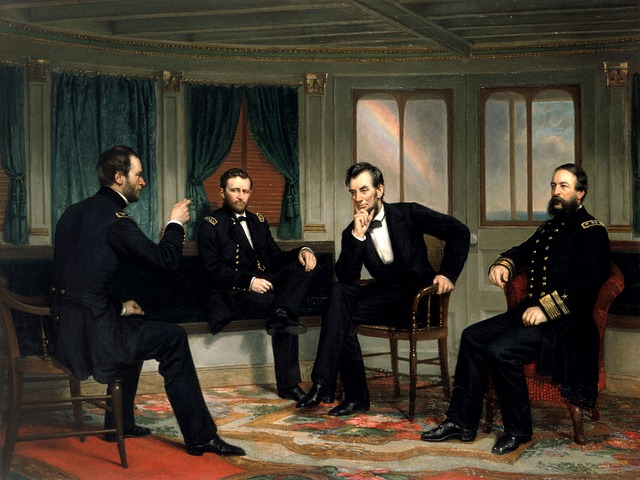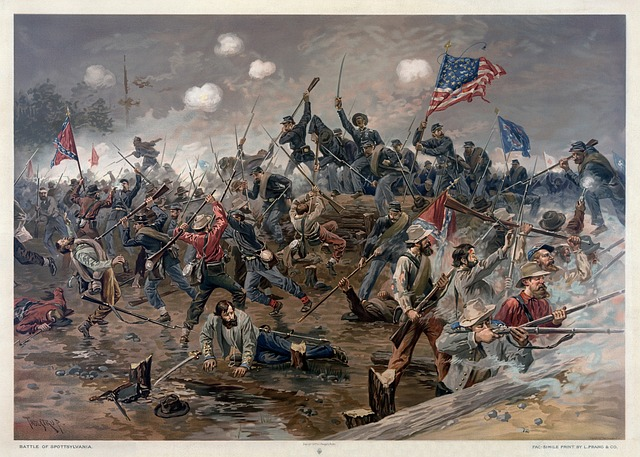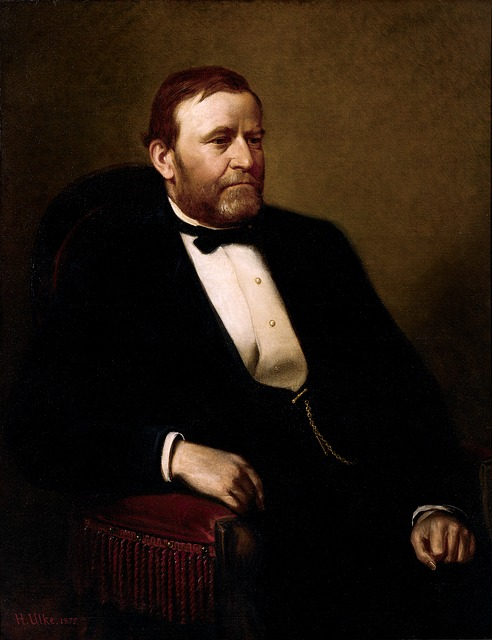Intro
Ulysses. S. Grant is one of the most hotly debated figures of the American Civil War and Grant’s reputation has been a shifting one. While many revere Ulysses as the general who demanded “unconditional and immediate surrender”, many believe he was a butcher. So who was Ulysses S. Grant truly? Was he a drunk who threw countless, nameless soldiers into their demise during the Civil War, or was he a brilliant military general who did what none before him could do and saved the Union?
Grant the Butcher of Union Forces
The long-held view of the West Point graduate, particularly in the South, has been that he was a butcher. Those who subscribe to this view like to point to the casualty statistics of Grant, particularly of the Overland Campaign that occurred late in the Civil War.
However, if we want to understand if Grant was a maniacal general, we need to look first at the Western Theater of the Civil War before moving to the Overland Campaign (including battles such as the Wilderness and Cold Harbor).

The Western Theater of the American Civil War
Ulysses’ first moves as a general during the Civil War resulted in the capture of Smithfield and Paducah, Kentucky. These cities were captured with no casualties.
Next, Grant set his sights on Fort Henry and Donelson and managed to capture these two forts with less than 3,000 casualties for his forces. The Confederates, on the other hand, suffered more than 16,000 casualties.
After this, Grant and Confederate forces met at Shiloh, Tennessee. Here, Grant lost over 13,000 men to the Confederate loss of more than 10,000 men (History.com, 2009). Grant did suffer slightly higher casualties at the Battle of Shiloh. This was the bloodiest battle of the Civil War to date.
Following Shiloh, Ulysses set his sights on Vicksburg. During the Vicksburg Campaign, the Union general suffered only 9,000 casualties to the Confederate casualties of 41,000.
After Vicksburg, Grant was sent to the Battle of Chattanooga where he suffered fewer casualties than the secesh forces once again. Here, the Union suffered 6,000 casualties, 1,000 less than the rebel troops.
Overview of the Western Theater
Overall, in the Western Theater of the Civil War, Grant had 37,000 casualties under his command compared to the secesh casualties of 84,000. This is a staggering difference. One that is often not noted when it is claimed that Grant was a “butcher.” (III, E. B. H., 2022)
The Overland Campaign
The most famous “evidence” of Grant being a “butcher” comes from the Overland Campaign. Gideon Welles, the secretary of the Navy, stated during the campaign, “Grant has no regard for human life.” (Ulysses S. Grant, n.d.)
The Overland Campaign was composed of deadly battles such as Spotsylvania Court House, Cold Harbor, and the Wilderness. These battles saw death and destruction on a level that had not been seen before. Spotsylvania Court House and Cold Harbor were battles that those who participated in would never forget. These were among the deadliest Civil War battles.
This campaign saw the Army of the Potomac pitted against the Army of Northern Virginia. The Army of the Potomac was under General George Meade but was directly overseen by Ulysses S. Grant. The Army of Northern Virginia, on the other hand, was under the command of General Robert E. Lee.
During this infamous campaign (including Cold Harbor), the Union soldiers suffered 55,000 casualties. That was about 45% of Grant’s forces.
The Confederate troops under Robert E. Lee, on the other hand, suffered only 32,000 casualties. However, the real number lies in the percentages. That was nearly 50% of Lee’s army, 5% higher than Grant’s.
It is important to look at these percentages because Grant had a larger army than Lee during the campaign and battles such as Cold Harbor and, therefore, more casualties (U.S. Department of the Interior, n.d.).
Overall, Grant suffered 154,000 casualties during his time as a general. This is much less than Lee’s 209,000 casualties. Grant inflicted 191,000 casualties on his opponents while Lee inflicted 240,000. (The Washington Times, 2008)

What Does it Mean?
These statistics make one fact clear: Grant was not a butcher. However, let’s say you’re still not convinced. Maybe you believe both Grant and Lee were butchers after reading those statistics. Is there another explanation for these high casualties?
The answer lies in disease and outdated medicine, a need to end the war and win re-election, and new technology.
Silent Killer
Disease was a rampant killer during the war and was actually deadlier than the combat itself.
There were two soldiers who died as a result of disease for every one man who died in combat. (Public Broadcasting Service, n.d.). This high death toll from disease exacerbated the need to end the war.
Grant decided that if the war continued to drag on and his Union army had not pressed the attack during the Overland Campaign, despite the high casualties, the disease would continue to spread and high numbers of men would die (Lucien, 2022).
This definitely played into Grant’s decisions during the Overland Campaign. The war had gone on long enough and the death toll was already too high (Lucien, 2022).

A good analogy is President Harry S. Truman’s decision to drop the atomic bombs on Hiroshima and Nagasaki. The goal of that plan was to end the war quickly so fewer lives would be lost in the long run.
Another problem in the 1860s was that the technology had improved.
The 1864 Election
Another factor that forced Grant to not turn back was the 1864 election. Ulysses knew he had to make progress in the war if President Abraham Lincoln wanted a chance at a second term in office.
Even Lincoln himself believed he would not be re-elected.
With this in mind, Grant’s army had no choice but to continue to press forward in the face of such high casualties. Turning back was not an option because turning back would mean certain defeat for the incumbent president.
This played a major part in Hiram Ulysses Grant continuing to push forward. The Army of the Potomac did not have the choice to turn back when the casualties were mounting.
However, there is still one more reason that casualties continued to mount so high: new, deadly technology.
Deadly Technology
There was a major technological change in the Civil War: now there were rifles. Rifles were different in that they had grooves in the barrel that shot the bullet in a spiral. This allowed them to be much more accurate from a much farther distance. This meant they were much deadlier.
Muskets, which had been used previously, did not have any grooves inside the barrel and thus shot bullets that were widely inaccurate.
This new technology contributed to such high casualty rates. Especially when you consider that Grant, Lee, and many other generals during the Civil War were trained at the United States Military Academy, or West Point.
At West Point, these future generals of the Civil War would have been trained in the classic military strategy at the time, which were Napoleonic tactics. These tactics had done wonders for the French emperor during the first part of the 19th century.

However, this was because they had used muskets. This meant that the gun fire was very inaccurate because of the lack of grooves. This made frontal assaults much more effective (a frontal assault is a military movement when you charge head on into your enemy).
These tactics had become outdated because of the invention and implementation of the rifle. However, few of these generals knew the impact that this technology would have and continued to use Napoleonic tactics. Some would see it towards the end of the war, however, the damage had already been done and nearly 750,000 Americans were already dead (Rank, 2019).
Grant the Hero of the Union Army
So, if we look at Ulysses S. Grant’s statistics, we see that they are consistently much lower than the Confederate casualty rates, including Robert E. Lee. We also see that there was a dire need to end the war due to the disease and destruction that was a result of the war dragging on. Finally, we see that the new technology played a role in the high casualty rates throughout the war.
As Dr. Curt Fields, the leading U.S. Grant living historian in the world, stated, “When people take a cool, distant, perhaps even an aloof look at Grant and analyze what he did, they’re going to see… that he… was no less than a brilliant general.” (Lucien, 2022) Indeed Grant was a brilliant general and not the butcher he has been accused of being.
Works Cited
History.com Editors. (2009, November 9). Battle of Shiloh. History.com. Retrieved April 22, 2022, from https://www.history.com/topics/american-civil-war/battle-of-shiloh
III, E. H. B. (2022, April 12). The Butcher’s Bill: Was grant or Lee responsible for more deaths in the Civil War? HistoryNet. Retrieved April 22, 2022, from https://www.historynet.com/the-butchers-bill/#:~:text=Although%20Maj.-,Gen.,33%2C000%2C%20or%2046%20percent).
Lucien, A. (Host). (2022, April 21). 1. Interview with Ulysses S. Grant Himself! (Dr. Curt Fields) – 200th Birthday Celebration (No. 1) In The Civil War Center Podcast. https://podcasts.apple.com/us/podcast/the-civil-war-center-podcast/id1620393643?i=1000558279009
Public Broadcasting Service. (n.d.). Disease. PBS. Retrieved April 22, 2022, from http://www.pbs.org/mercy-street/uncover-history/behind-lens/disease/#:~:text=Before%20war%20in%20the%20twentieth,two%2Dthirds%20died%20from%20disease.
Rank, S. (Host). (2019, February 11). Episode 6: The 1862 Peninssula Campaign (No. 6) In Key Battles of the Civil War. https://podcasts.apple.com/us/podcast/episode-5-the-1862-peninsula-campaign/id1451661573?i=1000429404652
The Washington Times. (2008, March 29). Is grant or Lee greatest general? The Washington Times. Retrieved April 22, 2022, from https://www.washingtontimes.com/news/2008/mar/29/is-grant-or-lee-greatest-general/
Ulysses S. Grant. HistoryNet. (n.d.). Retrieved April 22, 2022, from https://www.historynet.com/ulysses-s-grant/
U.S. Department of the Interior. (n.d.). National Park Civil War Series: The Battle of Cold Harbor. National Parks Service. Retrieved April 22, 2022, from https://www.nps.gov/parkhistory/online_books/civil_war_series/11/sec17.htm




Leave a Reply